
Consuelo Vanderbilt Balsan was a member of the prominent American Vanderbilt family. Her first marriage to the ninth Duke of Marlborough has become a well-known example of one of the advantageous, but loveless, marriages common during the Gilded Age. The Duke obtained a large dowry by the marriage, and reportedly told her just after the marriage that he married her in order to "save Blenheim" Palace, his ancestral home.

Jennie Spencer-Churchill, known as Lady Randolph Churchill, was an American-born British socialite, the wife of Lord Randolph Churchill, and the mother of British prime minister Sir Winston Churchill.

Lou Hoover was the wife of President Herbert Hoover and served as the first lady of the United States from 1929 to 1933.

The Commission for Relief in Belgium or C.R.B. − known also as just Belgian Relief − was an international organization that arranged for the supply of food to German-occupied Belgium and northern France during the First World War.

Lady Muriel Evelyn Vernon Paget CBE DStJ was a British philanthropist and humanitarian relief worker, initially based in London, and later in Eastern and Central Europe. She was made an OBE in 1918 and promoted to CBE in 1938. She received awards in recognition of her humanitarian work from the governments of Belgium, Czechoslovakia, Estonia, Japan, Latvia, Lithuania, Romania, and Imperial Russia. In 1916 she was invested as a Dame of Grace of the Order of St John.
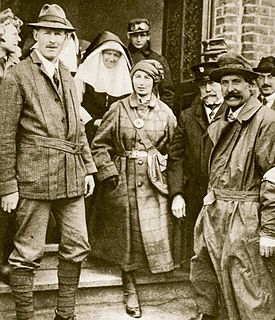
Lady Dorothie Mary Evelyn Feilding-Moore, MM was a British heiress who shunned her aristocratic background to become a highly decorated volunteer nurse and ambulance driver on the Western Front during World War I. She was the first woman to be awarded the Military Medal for bravery in the field. She also received the 1914 Star, the Croix de guerre from the French and the Order of Leopold II from the Belgians for services to their wounded.
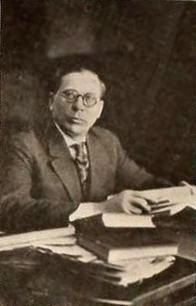
Ivan Abramson was a director of American silent films in the 1910s and 1920s.
The Almeric Paget Massage Corps was a British physiotherapy service during the First World War.

Dame Louise Margaret Leila Wemyss, Lady Paget, GBE was a British humanitarian, active in the cause of Serbian relief, beginning in World War I.

The German occupation of north-east France refers to the period in which French territory, mostly along the Belgian and Luxembourgish border, was held under military occupation by the German Empire during World War I. This entailed various impositions on the population, including malnourishment, forced labor, and requisitions of property, services, and goods.
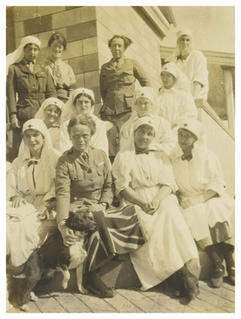
The Scottish Women's Hospitals for Foreign Services (SWH) was founded in 1914. They were led by Dr. Elsie Inglis and provided nurses, doctors, ambulance drivers, cooks and orderlies. By the end of World War I 14 medical units had been outfitted and sent to serve in Corsica, France, Malta, Romania, Russia, Salonika and Serbia.

Margaret (Madge) Neill Fraser known as Madge, was a Scottish First World War nurse and notable amateur golfer. She represented Scotland at international level every year from 1905 to 1914.

Violetta Thurstan, MM was an English nurse, weaver, and administrator whose work included help for refugees and prisoners of war. She knew several languages, travelled frequently and wrote a number of books. The first was about her experiences of nursing in dangerous troublespots during the First World War. She was honoured by three countries for her courage while nursing in the war, and was awarded the Military Medal.

Paris Eugene Singer was an early resident of Palm Beach, Florida. He was 22nd of the 24 children of inventor and industrialist Isaac Singer of Singer Sewing Machine Company fame, from whom he inherited money; he has been described as a "man of luxury". Born in Paris, he married Cecilia Henrietta Augusta ("Lillie") Graham, who bore him five children. He had a tempestuous romance with famous dancer Isadora Duncan, whose career he helped, and with whom he had another son, Patrick. Singer Island, Florida, is named for him.

Katherine Mary Harley was a suffragist. In 1913 she proposed and organised the Great Pilgrimage on behalf of the National Union of Women's Suffrage Societies. During the First World War she helped to found and organise the Women's Emergency Corps.

Ruth Holden was an American paleobotanist and nurse, who died in Russia during World War I.
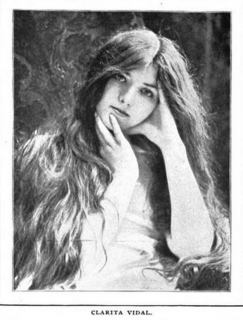
Clarita Vidal was an actress in Edwardian musical comedies, later known for her wartime work in Italy as Countess Chiquita Mazzuchi.
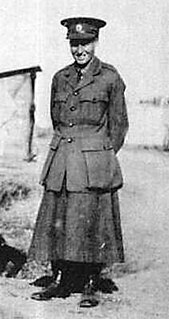
Leslie Joy Whitehead, known as Josephine, Joy, or Jo, was a Canadian female soldier during the First World War. Whitehead was one of a number of women from the western world to enter the frontline as a combatant during World War I after she enlisted as a man in the Royal Serbian Army at the age of 22. During her time on the Balkan Front, she would go on to work as a military engineer, a guard for the Scottish Women's Hospitals, and become a prisoner of war under the Bulgarian Army following the invasion of Belgrade on October 8, 1915.

The Women's Reserve Ambulance Corps was a volunteer aid organisation set up in the United Kingdom in 1915 during the First World War. Its members worked to direct people at stations, transport hospital patients and render assistance during German bombing raids. The corps sent personnel to the Dardanelles during the Gallipoli campaign and arranged the first all-female ambulance convoy to the British Army on the Western Front. The corps became a founding member of the Women's Army Auxiliary Corps in 1917 and continued in existence until September 1919.
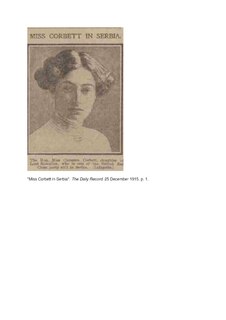
Elsie Cameron Corbett was a volunteer ambulance driver and major donor to the World War One Scottish Women’s Hospital for Foreign Service in Serbia, She was a prisoner of war in 1916 and won medals from the Serbian and British governments. She was also a JP, a leading suffragist, temperance supporter, folklorist and diarist.




















